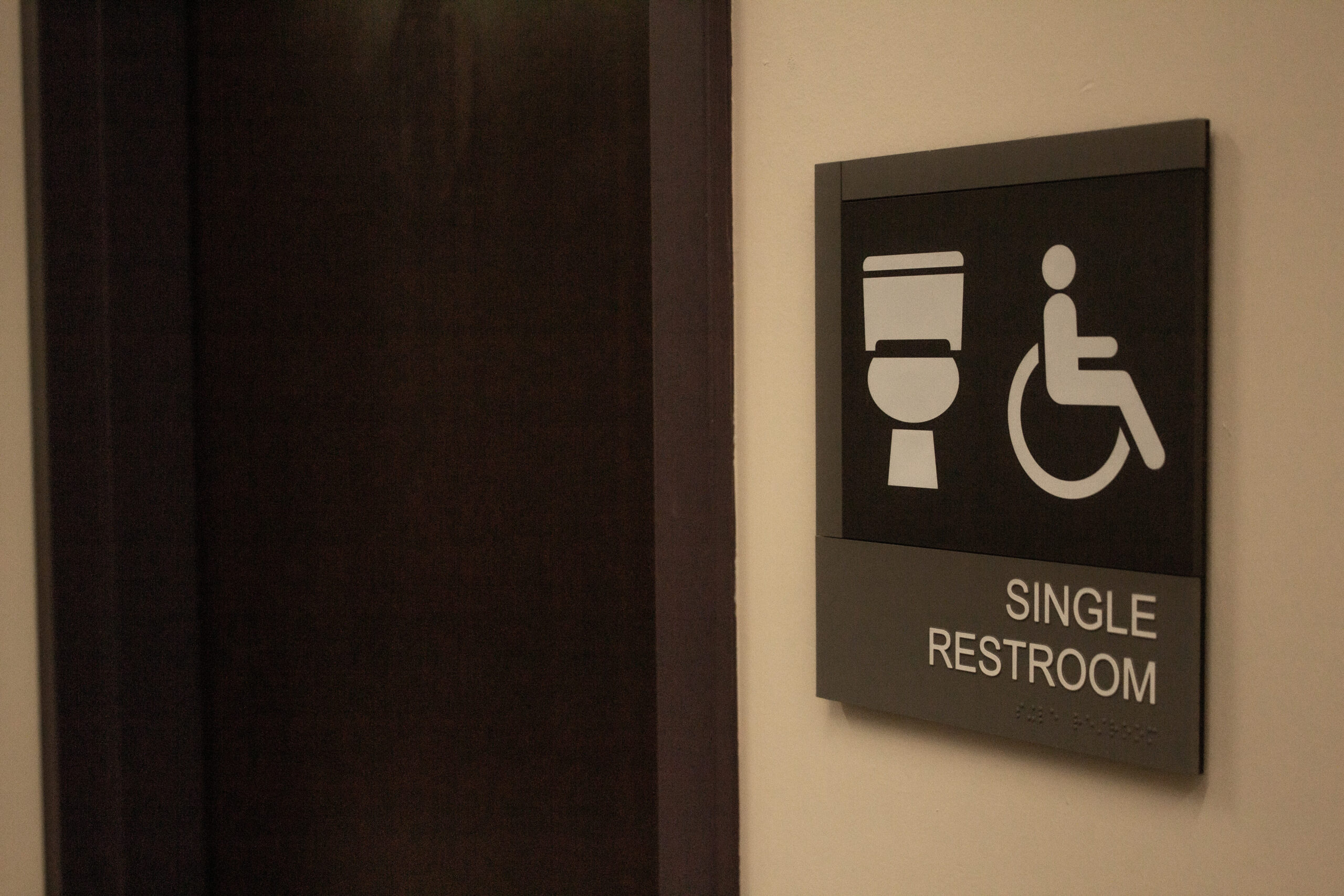Pictured: open single-stall bathrooms on the third floor of the library. PHOTO CREDIT: Maddie Bataille | Photo Editor
The Robert L. Carothers Library had the most gender-inclusive bathrooms on campus at the University of Rhode Island before renovations began on its bathrooms this summer.
According to Peter Larsen, the interim dean of University Libraries, the three phases of renovations to the library will add more gender-neutral, single-stall restrooms in multiple spaces of the library. According to Larsen, by 2021, all single-stall bathrooms on campus were marked with gender-inclusive signage.
The gender-inclusive restrooms that are already in the building, including those on the second floor, the third floor and in the 24-hour room, will remain so after the renovations.
Annie Russell, the director of the Gender and Sexuality Center (GSC), emphasized the importance of gender-neutral bathroom access on campus. As someone heavily involved in LGBTQ+ advocacy on-campus, Russell has seen many students’ struggles.
“We still have students who schedule their classes intentionally, knowing where they can get to a bathroom,” Russell said. “That is unacceptable.”
According to Russell, only about 50 percent of academic spaces on campus provide gender-inclusive bathrooms.
She and members of the GSC hope to see improvements in gender inclusivity on campus. According to Russell, many buildings, including the Ryan Center, do not have gender-neutral bathrooms at all and the Memorial Union has only one gender-neutral bathroom.
The GSC has advocated for gender-neutral access to the Office of Capital Projects, the off-campus office that is in charge of planning renovations and new buildings at URI. According to Russell, Capital Projects has said that any restroom renovations on campus will work to provide more gender-inclusive facilities.
“They’ve made it very clear, especially our queer students on campus, that we need to have gender-inclusive facilities in every public-facing building,” Russell said.
According to Larsen, the library was considering adding a multi-stall gender-inclusive bathroom on the first floor during the renovations. The bathroom would have combined two binary restrooms on the first floor. However, according to Larsen, outdated structures and supply chains halted this plan.
Built originally in the early 1960s, the bathrooms in the library have not been renovated since they were constructed.
“They have been well taken care of by maintenance and housekeeping, but there is only so much you can do,” Larsen said.
The request for more gender-neutral access has been a discussion for the past ten years, according to Larsen. The demand is there, but, according to Larsen, the money needed to undergo these projects is currently unreachable.
“We now live in a world where we recognize that the gender binary is not a thing,” Larsen said. “There is a vast spectrum of gender identities, and so there have been calls from students, faculty, and some staff, that we should do something about that on campus.”
In previous years, gender-neutral bathroom signage was put up within the library without formal request. This conflicts with certain building codes that control the ratios of men’s bathrooms to women’s bathrooms in a facility, according to Larsen. Current building codes are written on the basis of gender-binary bathrooms.
“The building codes are designed to deal with a different problem,” Larsen said.
Bathrooms receiving renovations in the library will continue to be updated and will open for community usage at an undetermined date.

